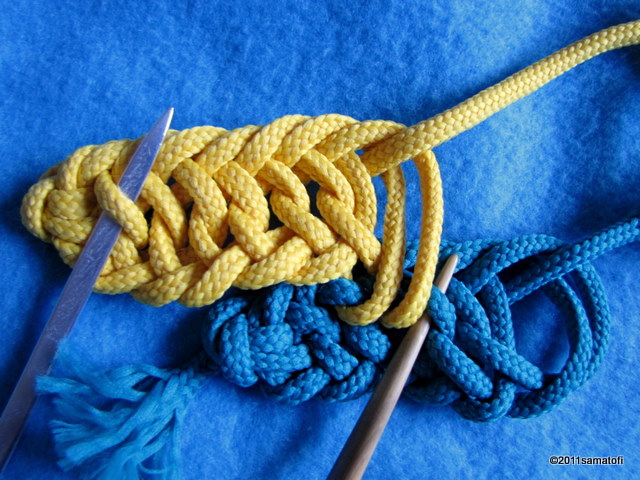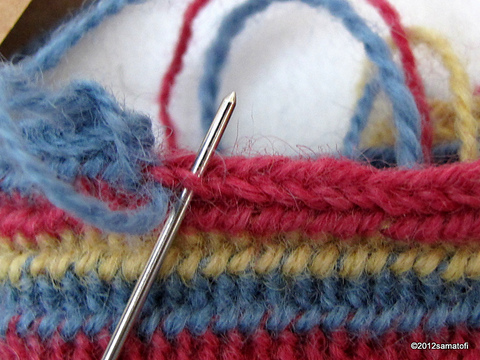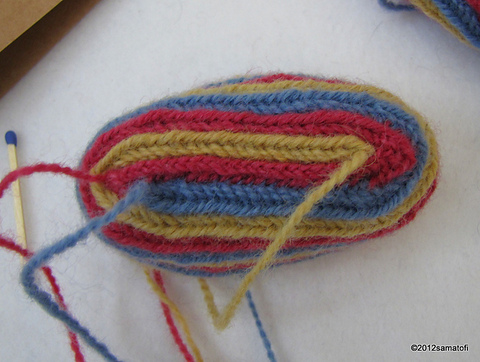Finnish Stitch 1+2, M1 (Kaukola Kekomäki)
Kaukola Kekomäki (in Carelian Isthmus, former Finland; area belongs to Russia since 1940)
Hansenin koodi UOO/UUOO Mid-1 (M1)
Video (link)
The connection stitch of this Kaukola Kekomäki Stitch is puzzling. In the nalbinding article by Kaukonen (1960) there is a sample, and it looks like the connection has been made to one loop only, M1. There is also a black and white diagram, but it is impossible to say whether the connection stitch in the drawing is M1, M1+F1, or possibly something else. The problem is that if you use the presumed stitch (UOO/UUOO M1), the front and the reverse sides look different than in the original fragment. Read more in the blog text here (link). Both sides of the original fragments are shown here, in black and white photos (link). In Vajanto's article (2014) it says that the Kaukola Kekomäki Stitch might be Finnish Stitch 2+2, ie UUOO/UUOOO M1+F1 (link).
 |
|
Finnish Stitch 1+2 (under 1, over2)
Follow the loop on the far right clockwise:
under-over-over - direction of yarn changes - under-under-over-over
UOO/UUOO
Needles show how to do the connection stitch (M1)
(Stitch done based on the diagrams in Kaukonen's article 1960)
|
Two fragments of nalbinding, in three-coloured stripes, made with this stitch type, were found in Kaukola Kekomäki, ab. 1200 CE (in Carelian Isthmus, former Finland; area belongs to Russia since 1940; (map). Otherwise similar as the Finnish Stitch 1+2, but the connection stitch is not the more common F1, but M1. Needles on the photo above show how to do the connection stitch M1.
You can read more about the Finnish Stitch Family on page Stitch Grouping by Toini-Inkeri Kaukonen (link).
An original nalbinding fragment from Kaukola Kekomäki (about 1200 CE) is on display in the National Museum in Helsinki (Finland). The size of the fragment is not much larger than a matchbox. On one end, it is about 3 fingers wide, and on the other end about 2 fingers wide, and the lenght is about 4 fingers wide. The yarn used in the fragment(s) is thin, and the visible part of the colour stripes is about 4 mm (photo (page 27, photo 12).
|

|
Front side. A darning needle was used, and the stitches were pulled smaller in the air between thumb and forefinger.
The stitch is done based on the diagrams in Kaukonen's article 1960.
|
 |
Reverse side.
|
|